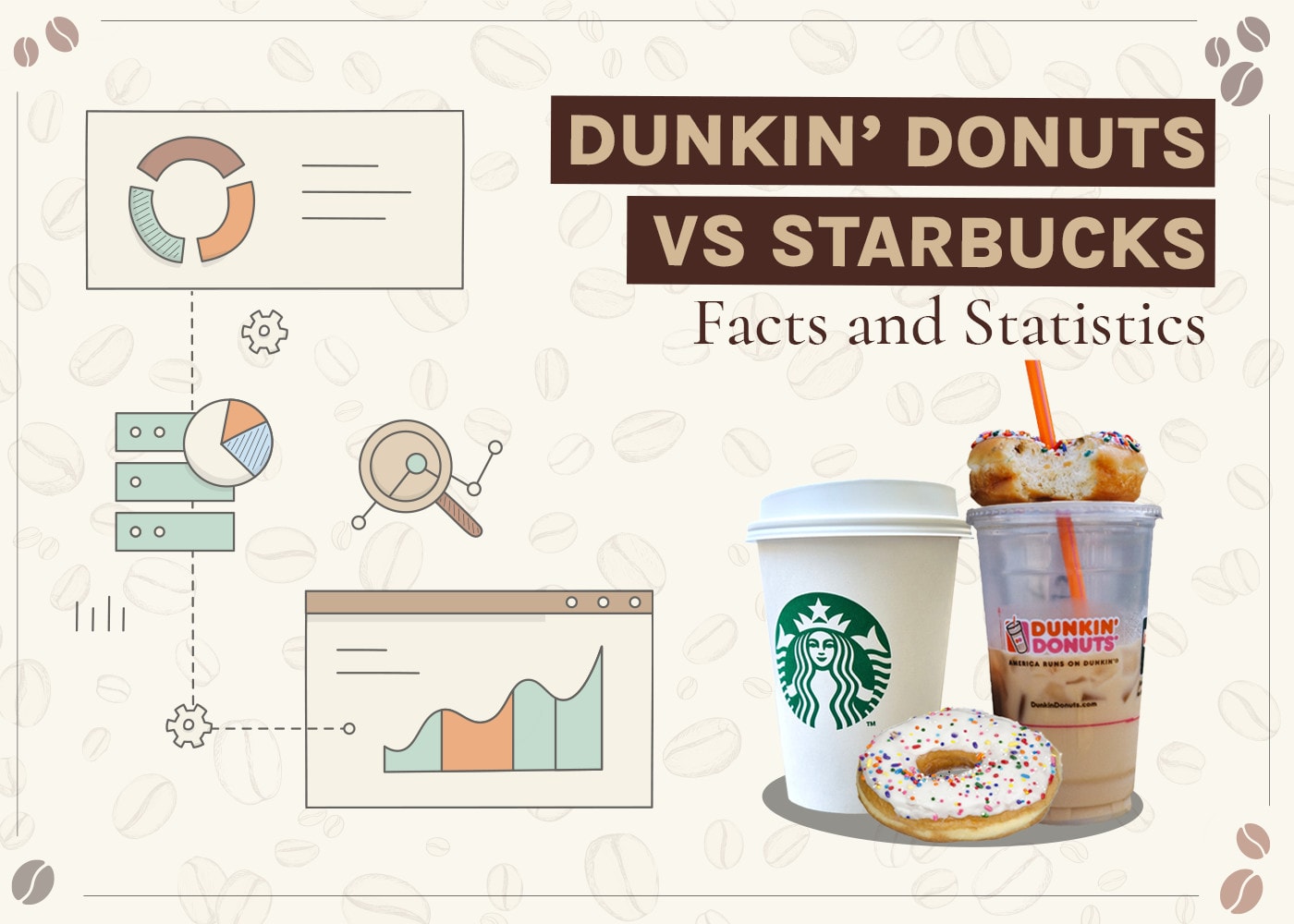
Note: This article’s statistics come from third-party sources and do not represent the opinions of this website.
The coffee industry continues to grow year after year. It is clear to see in our cities, towns, and culture just as we can see it in coffee shop industry statistics. With a whole new world emerging post-pandemic, however, coffee culture is looking at some changes.
In the article below, we have outlined some important and interesting coffee shop statistics as they relate not only to the industry, but also to the current trends, the United States, and globally.
We have broken down each one to give you a better perspective of coffee culture as a whole in 2024; plus, we will answer some of your most frequently asked coffee shop industry questions this year.
Click below to jump ahead:

The 19 Coffee Shop Industry Statistics
- Single-cup coffee brewers are found in 41% of homes and 28% of business offices in the United States.
- Gourmet coffee makes up 59% of the coffee consumed on a daily basis.
- In the US, 70% of people prefer to make their coffee at home.
- Coffee drinkers in the United States average two to three cups of coffee each day.
- People prefer regular coffee over espresso-based beverages twice as much in the US.
- Millennials prefer espresso-based drinks and gourmet coffee 70% of the time.
- In the United States, Iced coffee is consumed by 20% of coffee drinkers once per week.
- About 2.97 cups of gourmet coffee are consumed by specialty coffee drinkers every day.
- In the last five years, the US has seen a 2.4% growth in the number of coffee shops each year.
- As of 2022, there are 65,410 coffee shops in the United States.
- Starbucks customers purchased 17.1% of the single-serve coffee which is the most in the US.
- In the US there are 17,537 coffee-related jobs, and the number of people employed is estimated to rise 3.8% per year until 2025.
- Coffee production businesses in the US retain four to five employees on average.
- In 2022, the global coffee industry’s revenue is projected at $90,277 million.
- Globally in 2022, roasted coffee purchases come in at $73,935 million while Instant coffee comes in at $16,342 million.
- In 2020, coffee sales decreased globally by 3.8% compared to the year before.
- In the first five years in business, more than half of independent coffee shops will close.
- 99% of small coffee shop closures have nothing to do with the quality of their coffee.
- The consumption of coffee is projected to increase by one-third worldwide by the year 2030.
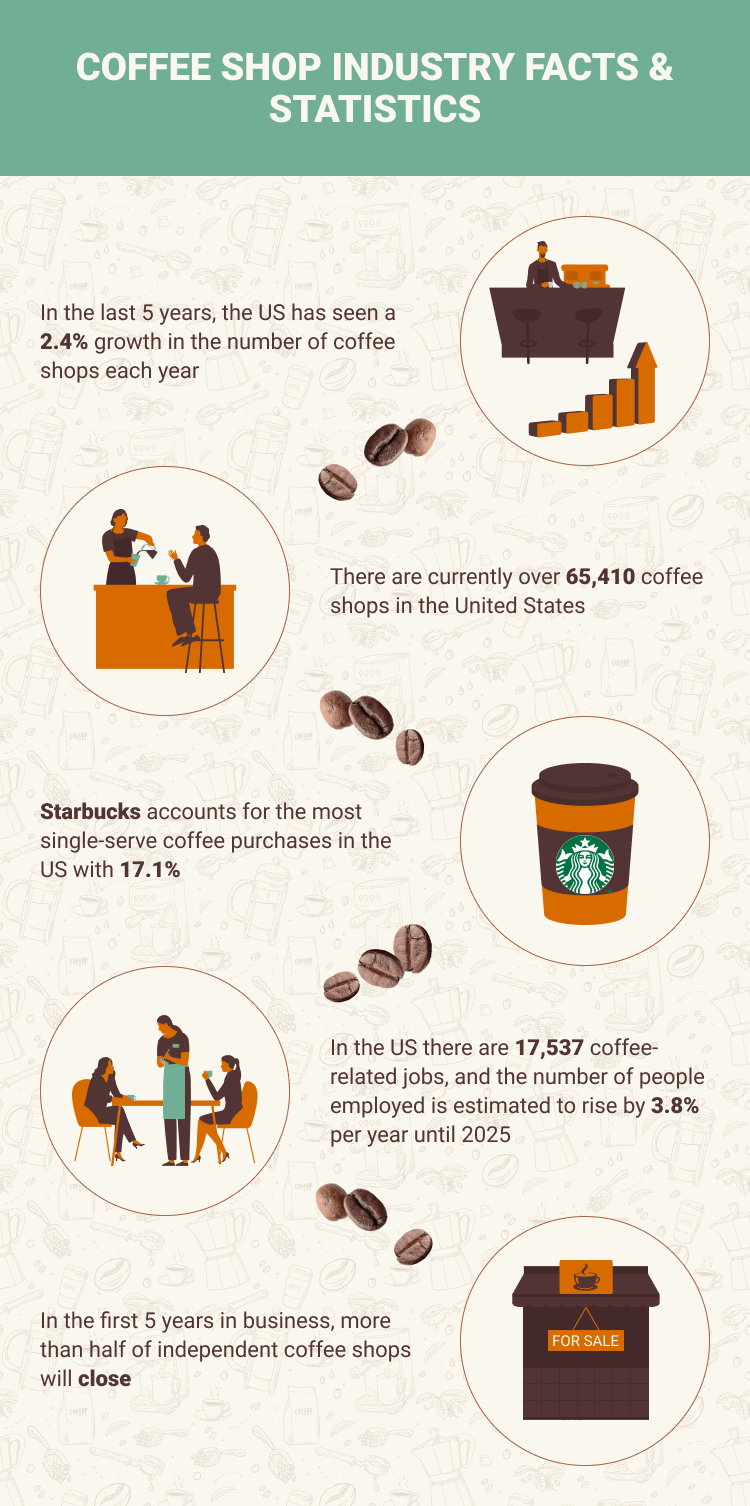

Coffee Trends
1. Single-cup coffee brewers are found in 41% of homes and 28% of business offices in the United States.
(Mordor Intelligence)
Sustainability is a trend growing just as quickly as coffee consumption. Businesses and individuals alike are looking for ways to cut back on waste, and this includes coffee. This has paved the way for the popularity of single-serve coffee machines. This no-waste approach not only reduces the amount of coffee wasted, but it is a quicker and easier alternative, as well.

2. Gourmet coffee makes up 59% of the coffee consumed on a daily basis.
(National Coffee Association)
Across the globe, more and more coffee lovers are interested in supporting small businesses and independent coffee shops. The reason for this is people expect more quality from their coffee. This is especially true of the younger generation who almost inclusively drink gourmet and specialty brews. Smaller coffee shops provide better brews than bigger chains.
3. In the US, 70% of people prefer to make their coffee at home.
(National Coffee Association)
Coffee pods and brewers such as the Keurig have made brewing at home easy and efficient. On the heels of the Covid-19 crisis, more and more coffee lovers are looking for ways to have quality coffee at home. Be that as it may, it is projected that coffee shops will be on the rise again now that the pandemic is passing.

4. Coffee drinkers in the United States average two to three cups of coffee each day.
(Statista)
Ever since the Boston Tea Party, coffee has been part of the American culture. Recently, though, more people have started drinking it for the benefits associated with accelerated thinking, improved alertness, and increased cognitive function. While the US consumes a lot of coffee, they are by no means the top coffee drinkers. Most Nordic countries have them beat with Finland coming in first. Residents of Finland drink between six and seven cups per day.
5. People prefer regular coffee over espresso-based beverages twice as much in the US.
(Statista)
With an abundance of chain coffee shops like Starbucks and Dunkin’, Americans have become accustomed to regular drip coffee as their go-to brew of choice. Not only that, but many coffee lovers in the US also have at-home drip machines as they prefer to enjoy coffee at home. That is not to say Americans don’t love espresso-based drinks, however. In fact, they are on the rise.
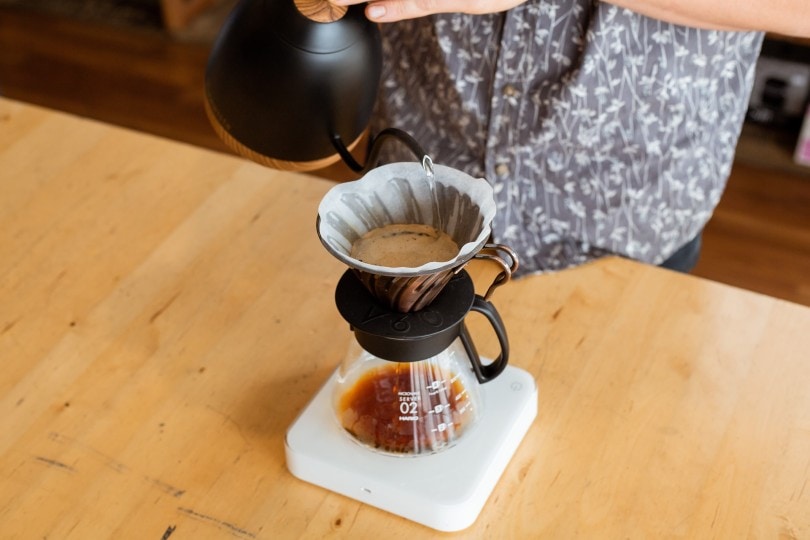
6. Millennials prefer espresso-based drinks & gourmet coffee 70% of the time.
(National Coffee Association)
Millennial coffee drinkers have been steadily climbing for a few years. Between the ages of 18 and 34, young brew drinkers are becoming addicted to caffeine, plus they are starting to consume coffee at a younger age than ever before. Not only that, but millennials have also popularized coffee tourism. It’s not just about finding the best brew but visiting where it’s grown and roasted.
7. In the United States, Iced coffee is consumed by 20% of coffee drinkers once per week.
(Vending Market Watch)
It is not just the traditional ice coffee that people are consuming. Cold brew has become increasingly popular due to its sweeter and smoother taste. What’s more, the rise in bottled coffee has also added to cold brew’s popularity as this drink is more stable than regular coffee. It is better for longer periods making it great for convenience store sales.
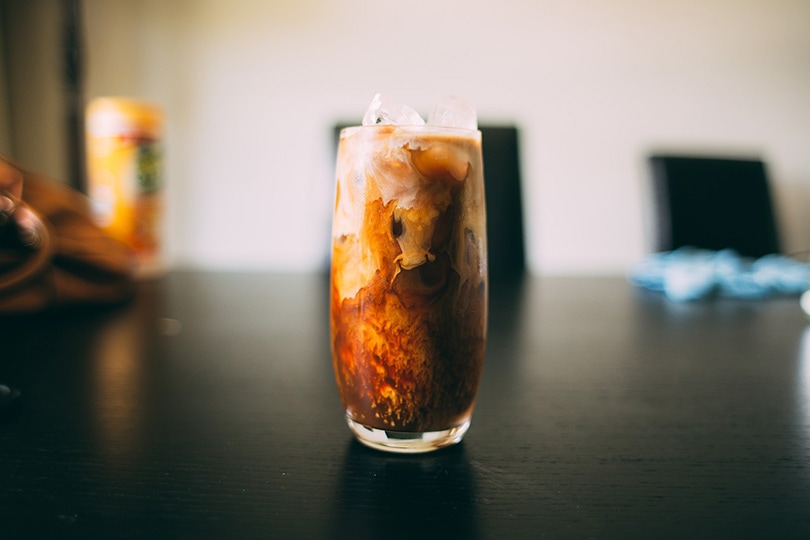
8. About 2.97 cups of gourmet coffee are consumed by specialty coffee drinkers every day.
(Specialty Coffee Association)
Although it may not be the favorite in the US, gourmet coffee is trending worldwide. Again, this comes back to quality. The more coffee is consumed, the more people expect it to be above par. This has created a rise in espresso-based beverages, specialty drinks, and innovative new coffee that is a break from the centuries-old brew coffee lovers are used to drinking.

US Coffee Shop Industry Statistics
9. In the last five years, the US has seen a 2.4% growth in the number of coffee shops.
(IBIS World)
There are a lot of reasons why new coffee shops have been opening right and left. The urbanization of towns, increase in income of younger generations, and the popularity of gourmet coffee has all added to the rise of independent cafes. Besides those factors, however, is the atmosphere of comfort and relaxation a coffee shop often has that’s a contrast from fast-food chains, bars, and restaurants.
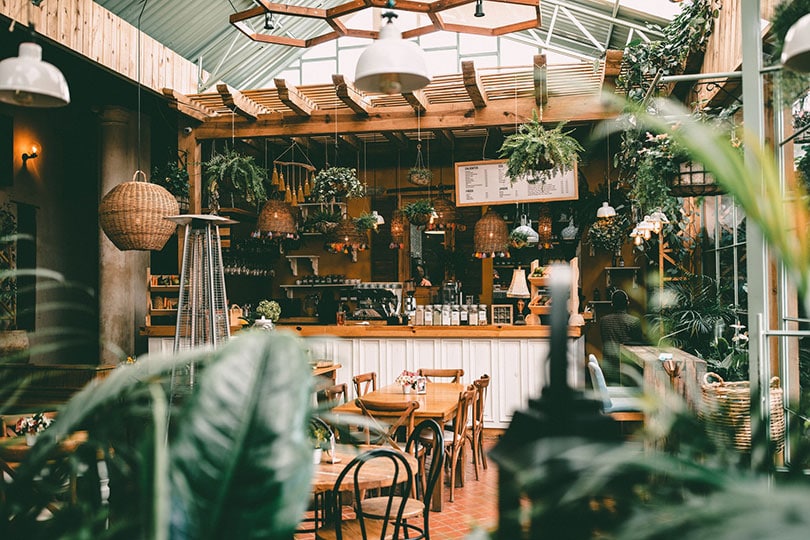
10. As of 2022, there are 65,410 coffee shops in the United States.
(National Coffee Data)
The rise in coffee shops is not just in Europe. Each year, the United States sees an increase in coffee shops due to the reasons mentioned above. Some of the most cafe-congested cities in the US are Seattle, New York, Los Angles, and San Francisco. Berkeley has the most in the country per capita.
11. Starbucks accounts for the most single-serve coffee purchases in the US with 17.1%.
(Statista)
Starbucks is the largest coffee shop in the United States which is why they have the most single-serve coffee purchases. This big brand chain has been a go-to coffee palace for many years. They have over 15,000 locations in the US alone. The first location was originally in Seattle Washington. Additionally, the name for the cafe was inspired by the classic novel Mody Dick and is meant to commemorate the early sea-faring coffee trade.
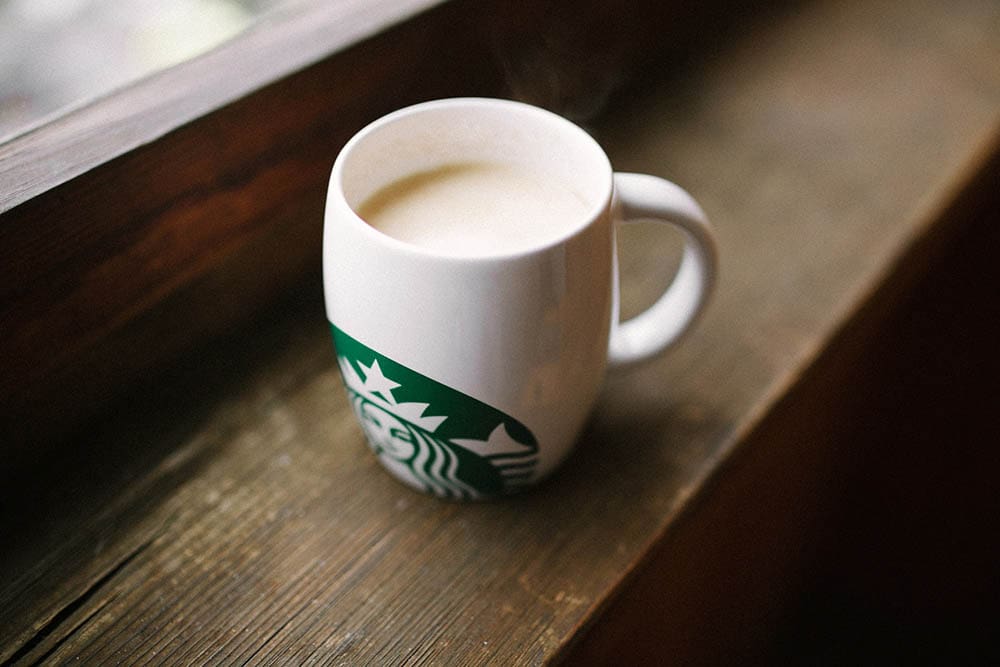
12. In the US there are 17,537 coffee-related jobs, & the number of people employed is estimated to rise 3.8% per year until 2025.
(IBIS World)
As the number of coffee shops, coffee roasters, and coffee producers is on the rise, so is the number of jobs available in the field. There has been a marked increase in the demand for baristas and barista-teaching resources, as well. Pulling espresso has become a trendy job that many young men and women are hoping to acquire. This has also led to a surge in barista courses both online and in-shop.
13. Coffee production businesses in the US retain four to five employees on average.
(IBIS World)
Most cafes have four to five employees to run their establishment. This typically consists of a manager, two or three baristas, and one to two bus persons. These numbers can vary depending on the size, location, and popularity of the cafe, however. The type of coffee business it is can also make a difference. For example, some companies in the field employ roasters, chefs/cooks, production workers, waitresses, counter help, marketing experts, and many other positions.


Global Coffee Shop Industry Statistics
14. In 2022, the global coffee industry’s revenue is projected at $90,277 million.
(Statista)
Coffee continues to become more and more popular as the years progress, and it does not show any sign of slowing. There are many reasons why. First, coffee is in abundance so most people around the world have access to it. It is enjoyed by young and old regardless of religion, demographics, ethnicity, and so on. People are also starting to drink coffee at younger ages which is why it’s so mega-popular with millennials. These reasons, plus many others, have increased sales and consumption of the beans without any sign of slowing.
15. Globally in 2022, roasted coffee purchases come in at $73,935 million and Instant coffee at $16,342 million.
(Statista)
As we have discussed above, gourmet coffee and specialty drinks have become more popular worldwide. This is yet another reason for the increase in coffee shops, and why they have done so well. Coffee lovers are looking for new and innovative brews from sustainable companies they can support. It has caused a distinct shift away from ready-to-brew brands that were more popular in the past.
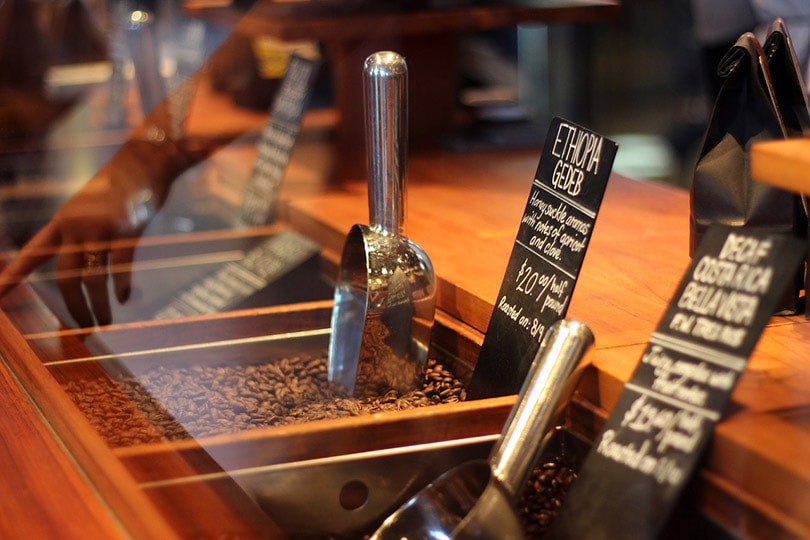
16. In 2020, coffee sales decreased globally by 3.8% compared to the year before.
(International Coffee Organization)
As the coffee statistics have shown a steady climb in most areas, the decrease in sales globally for 2020 has a lot to do with the pandemic that affected the entire world. Covid-19 slowed the supply chain, had most parts of the world under quarantine at one point or another, and most people’s income took a dramatic hit. For all these reasons, sales decreased. However, there has been an improvement, but it can take a few years for the global economy to bounce back.
17. In the first five years in business, more than half of independent coffee shops will close.
(Food Truck Empire)
Although this is a sad coffee shop industry statistic, it is true nonetheless. More than half of coffee shops will close their doors within the first five years. Even more alarming, an even steeper number will have to shut down within the first year. Even the busiest-looking place with the best coffee might not make it out of the “new cafe on the block” phase. Here’s why…

18. 99% of small coffee shop closures have nothing to do with the quality of their coffee.
(Food Truck Empire)
Ironically, the reason their doors are closing is the same reason why cafes are so popular. The atmosphere that calls to people to have long conversations, read a book, or get a few hours of studying done does not do much for the cafe’s bottom line. If five people stay for five hours but order only one coffee; you can see the problem. The good news, those shops that survive have figured out their side hustle. Whether it be catering or selling their in-house roasted beans online, finding alternative sales is essential to keep a cafe alive in 2022.
19. The consumption of coffee is projected to increase by one-third worldwide by the year 2030.
(Internation Coffee Organization)
This is a pretty big number, though it may not look so impressive on paper. Consider this instead; If you live in a community where there are 75 coffee shops, there will be an additional 25 shops in less than eight years. Now, factor in all the trends we’ve already mentioned such as the increase in gourmet coffee, cold brew, and coffee quality. Also, think about why many small businesses close within the first five years. All of these coffee shop industry statistics equals an exciting time in the culture with a lot of new and innovative ideas on their way.
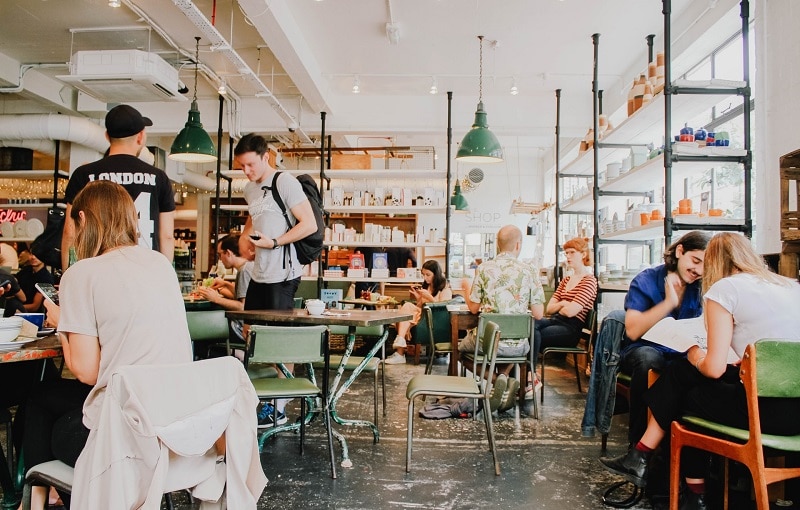

Frequently Asked Questions
Statistics are great, and they paint a vivid picture of the coffee landscape and culture. Be that as it may, they don’t always answer all our questions the way we hope they will. To that end, take a look at the most commonly asked coffee shop industry questions in 2022.
Is Covid-19 Still Affecting The Coffee Industry?
This is a complicated question that has a simple answer, and that answer is yes. Unfortunately, covid is still affecting the global economy, and it will likely take years (if ever) before it rights itself. The pandemic has influenced how we shop, how we work, and how we live. Meanwhile, the global supply chain, e-commerce, brick-and-mortar, and purchasing decisions have all been changed and modified. Although things are looking better, covid is still in the air affecting many people and coffee shops alike.
What Are the Coffee Trends for This Year?
You can likely guess a lot of the trends based on the statistical figures mentioned above. Some are a bit more subtle, however. The most prevalent are easy to see such as the increase in coffee consumption amongst the younger generation. Others are harder to see without the proper coffee goggles, though. Take a look at coffee trends for the year:
- Coffee as tourism
- Cold Brew
- Bottled and canned coffee
- Subscription coffee
- Specialty and gourmet coffee
- Sustainable coffee shops and businesses
- Single-cup coffee machines
- Health-conscious coffee
- App-ordering
- Coffee shop atmosphere
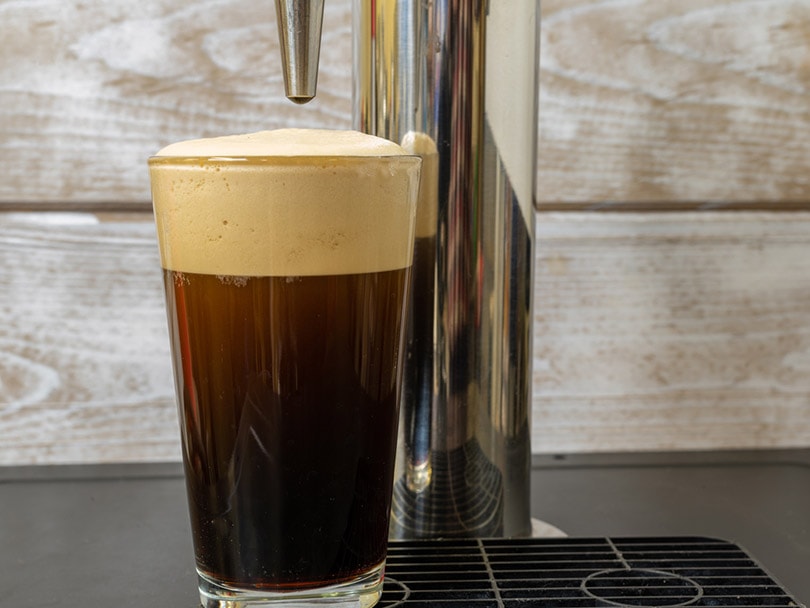
Is Now A Good Time To Open A Coffee Shop?
As the last trend indicated, there is a rise in the popularity of coffee shops. As most people have spent way too much time at home, the concept of having a place to socialize and relax outside of the home is gaining momentum.
On the other hand, app-ordering and drive-throughs are also at an all-time high. To keep customers in their seats and coming back for more, customers are expecting to be wowed beyond what they’re used to. Therefore, many coffee shops are becoming more innovative and looking outside the box for ideas.
What Do Consumers Want In Their Coffee Shops?
This is a question that we could create a whole article around, but to give you the basics, customers want four main things from their coffee shop in 2022:
- Options
- Quality
- Comfort
- Uniqueness
Options are absolutely imperative, these days. Customers want to be able to customize their coffee to their delight with various kinds of milk, creams, sweeteners, and additional ingredients. They also want quality. Average coffee no longer cuts it even for the most basic cafe.
Beyond the coffee itself, people going into a cafe want to feel welcome with friendly service and a cozy atmosphere. At the same time, they are looking for more than just the traditional cafe or coffee bar. Consumers are interested in shops that are geared toward their interests, lifestyle, and so forth.
Who Leads The Coffee Industry?
Globally, the major players in the coffee industry might surprise you. According to Mordor Intelligence, the top five coffee moguls in the world are:
- The Kraft Heinz Company
- The Coca-Cola Company
- Nestle SA
- JM Smucker Company
- JAB Holding Company
All of these organizations own multiple coffee brands and have the rights to sell many others they don’t own. For example, JAB Holding owns Keurig, Caribou Coffee, Panera Bread, Krispy Kreme, and many others. They also hold the right to sell Starbucks and Dunkin’ K-cups.
The Starbucks Corporation is the largest coffee company in the US along with Dunkin’ and Tim Horton’s. However, one of their biggest coffee competitors, aside from the two right below them in size, is Mcdonald’s.

How Quickly Is The Coffee Industry Growing?
The coffee industry is growing. It is expected to reach over $144 billion in the United States in the next couple of years. Keep in mind, however, it is not just the coffee shop industry that is moving ahead. The coffee industry has many moving parts.
Areas such as roasting, packaging, and fulfillment are part of the industry. Newer areas such as subscription services, app-ordering, micro shops, and AI technology will also play a role in the coffee economy.
Independent coffee shops and cafes are still thought to do well, however, with the right mindset behind them. As you have read, people are not settling for the same old cup of joe anymore. They want quality and consistency while out and convenience while at home. All of this will make for many new trends in the coming years, as well.

Conclusion
Coffee shop industry statistics are not set in stone, but they typically reflect what the future has in store. As you can clearly see, coffee shops are on the rise along with the entire industry. We hope that you have enjoyed these stats, and they have given you some food for thought if you are considering opening a cafe this year or next.
- Read More: Interesting Coffee Startups To Watch
- Mordor Intelligence
- National Coffee Association
- National Coffee Association
- Statista
- Statista
- National Coffee Association
- Vending Market Watch
- Specialty Coffee Association
- IBIS World
- National Coffee Data
- Statista
- IBIS World
- IBIS World
- Statista
- Statista
- International Coffee Organization
- Food Truck Empire
- Food Truck Empire
- International Coffee Organization
Table of Contents
- The 19 Coffee Shop Industry Statistics
- Coffee Trends
- 1. Single-cup coffee brewers are found in 41% of homes and 28% of business offices in the United States.
- 2. Gourmet coffee makes up 59% of the coffee consumed on a daily basis.
- 3. In the US, 70% of people prefer to make their coffee at home.
- 4. Coffee drinkers in the United States average two to three cups of coffee each day.
- 5. People prefer regular coffee over espresso-based beverages twice as much in the US.
- 6. Millennials prefer espresso-based drinks & gourmet coffee 70% of the time.
- 7. In the United States, Iced coffee is consumed by 20% of coffee drinkers once per week.
- 8. About 2.97 cups of gourmet coffee are consumed by specialty coffee drinkers every day.
- US Coffee Shop Industry Statistics
- 9. In the last five years, the US has seen a 2.4% growth in the number of coffee shops.
- 10. As of 2022, there are 65,410 coffee shops in the United States.
- 11. Starbucks accounts for the most single-serve coffee purchases in the US with 17.1%.
- 12. In the US there are 17,537 coffee-related jobs, & the number of people employed is estimated to rise 3.8% per year until 2025.
- 13. Coffee production businesses in the US retain four to five employees on average.
- Global Coffee Shop Industry Statistics
- 14. In 2022, the global coffee industry’s revenue is projected at $90,277 million.
- 15. Globally in 2022, roasted coffee purchases come in at $73,935 million and Instant coffee at $16,342 million.
- 16. In 2020, coffee sales decreased globally by 3.8% compared to the year before.
- 17. In the first five years in business, more than half of independent coffee shops will close.
- 18. 99% of small coffee shop closures have nothing to do with the quality of their coffee.
- 19. The consumption of coffee is projected to increase by one-third worldwide by the year 2030.
- Frequently Asked Questions
- Conclusion






